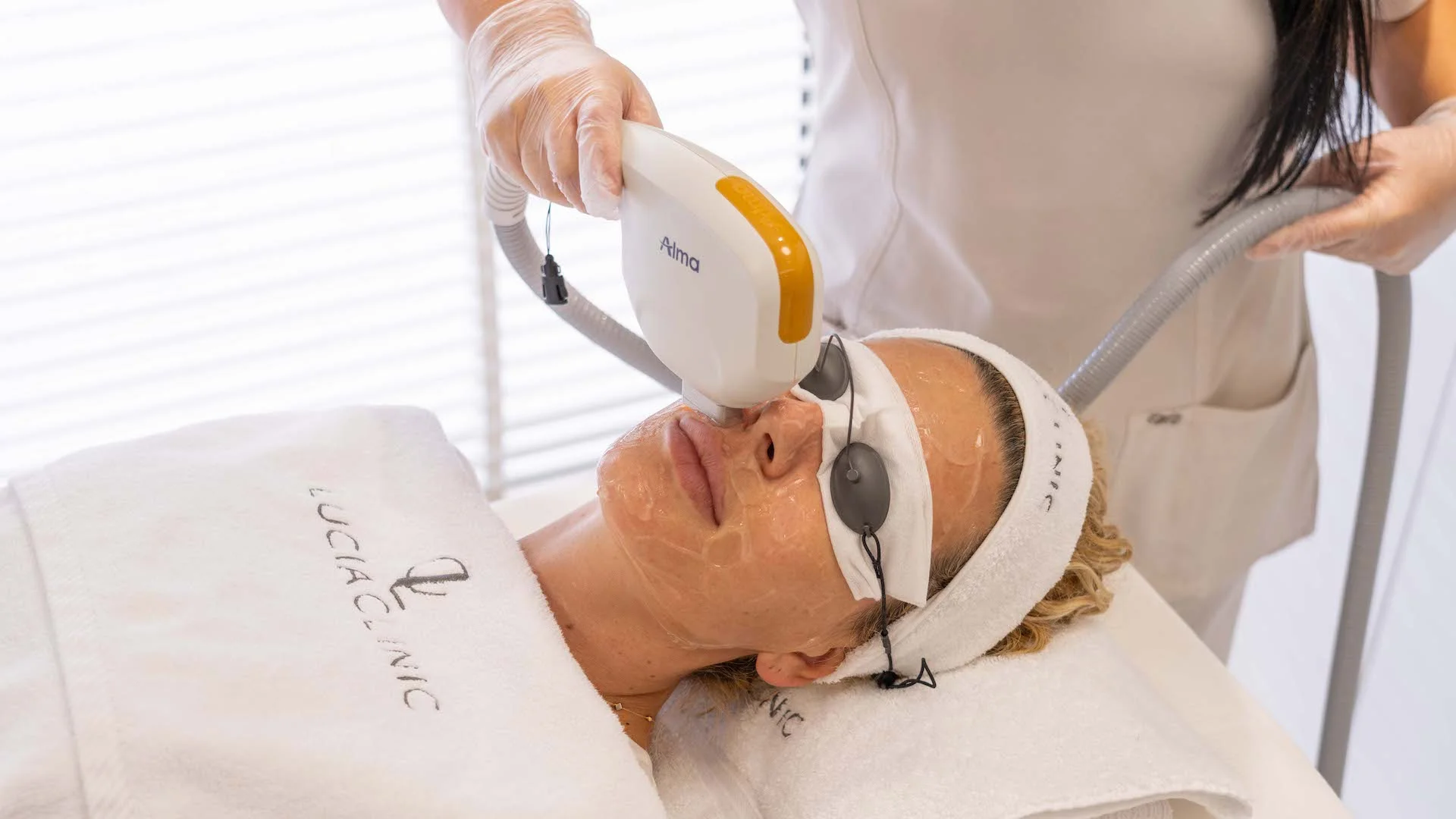| Is it painful? | No |
| Is there any downtime? | Usually no |
| How many sessions are needed? | Usually 4-6 sessions |
| How long does the procedure take? | Around 30 minutes |
| When can I see the results? | After recommended course of treatments |
| How often should I do it? | Every month |
HOW DOES AFT PHOTO-REJUVENATION TREATMENT WORK?
Photo-rejuvenation treatment is sometimes called photo-facial. It is a non-invasive and fast skin rejuvenation procedure that uses intensive pulses of broadband light and treats discoloration of the skin and photo aging at the surface of the skin or at the cellular level. It gives a younger-looking and smoother appearance to the skin.
IPL light penetrates deep into the epidermis and causes collagen fibers and blood vessels to constrict but it doesn’t damage the top layer of the skin. It is so effective because the targeted light is absorbed by melanin and red blood cells deep in the skin and it intentionally damages the area where it is directed. This is when the pigmentation is broken up but at the same time cells are woken up and transform the patchy, red or sun-damaged skin to a more even and smoother complexion.
This special technique, known also as pulsed light therapy, emits intense, bright light on different areas of the skin. The therapist uses a handpiece called an IPL device that has a glass or laser surface tip. The tip is pressed to the targeted areas and emits light that disrupts the collagen beneath the skin and heats it up. This way the body is stimulated to produce more of this collagen that eventually fills in wrinkles and fine lines on the face, reduces discoloration and flushing and can fill in shallow acne scars.
WHAT SKIN PROBLEMS CAN BE TREATED WITH AFT PHOTO-REJUVENATION?
Photo-rejuvenation treatment uses broad-spectrum light technology to effectively treat different skin issues. It can be used on any part of the body. The common skin problems that it can treat include
- Age and sunspots
- Freckles
- Rosacea
- Broken capillaries
- Hyperpigmentation – brown spots
- Stretchmarks
- Skin texture issues
- Spider veins
- Wrinkles and fine lines
- Excessive flushing
- Acne scars
- Enlarged pores
Since IPL delivers different wavelengths, AFT rejuvenation therapists use it to treat different skin discoloration issues over areas such as the face, neck, chest, back and arms.
Acne-prone skin
AFT photo-rejuvenation treatment is especially effective in targeting acne scars and inflammatory acne. IPL or light therapy lowers the levels of bacteria that cause acne to appear. It is scientifically proven that the AFT photo-rejuvenation procedure treats the issues with acne and also lowers the excess sebum that sebaceous glands produce which can also contribute to the appearance of acne. This skin condition is treated the safest way with photo-rejuvenation .
Rosacea
IPL photo-rejuvenation uses special wavelengths and reduces the redness, inflammation, or uneven skin tones that are caused by rosacea. After the treatment, the skin gradually improves. Since this procedure targets problematic areas and stimulates new collagen to build up it greatly improves the appearance of rosacea.
THE BENEFITS OF AFT PHOTO-REJUVENATION TREATMENT
AFT Photo-rejuvenation is a perfect solution for repairing sun-damaged skin and making the skin more even. Since it has minimal to no downtime and few side effects it can address various skin discoloration problems and improve them safely and effectively.
It is a non-invasive procedure and a lot of patients who shy away from surgical procedures turn to photo-rejuvenation treatment to improve their skin issues.
AFT Photo-rejuvenation is a fast treatment and can be completed in one hour or even less and can be used on almost any part of the body.
It reduces redness and hyperpigmentation, fine lines and wrinkles, improves photo-damage, eliminates bacteria that cause acne – overall it ensures a more youthful appearance and improved tone and texture of the skin on the face, neck and chest.
Another advantage of IPL photo-facial is that it can be combined with other procedures like chemical peels, microdermabrasion and other facials that address the superficial skin layer. IPL treatment targets deeper layers of the skin so it can be safely done with facials that target the top layers of the skin. It is suitable for most patients with lighter skin tones who are looking for improvement in their complexion.





